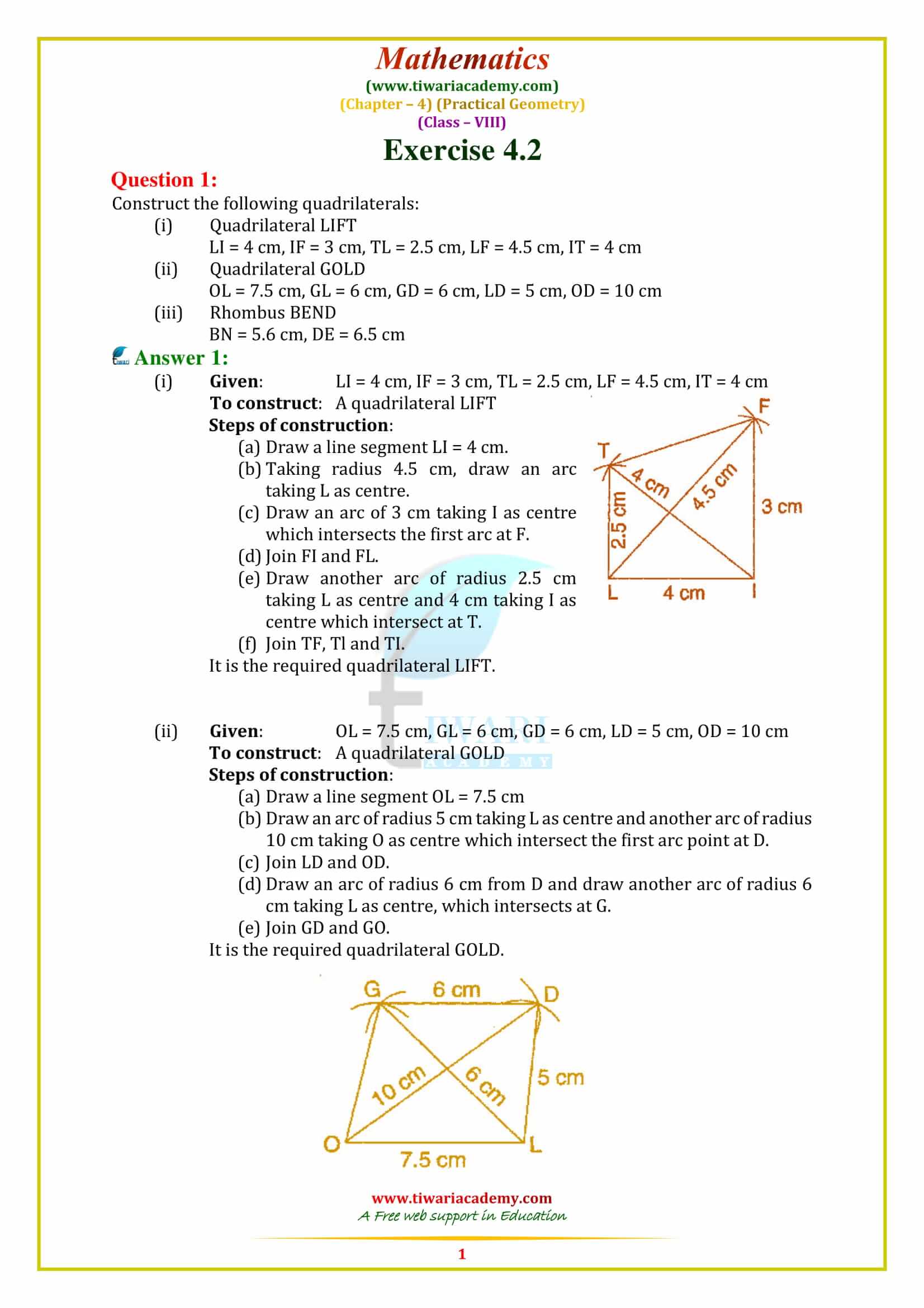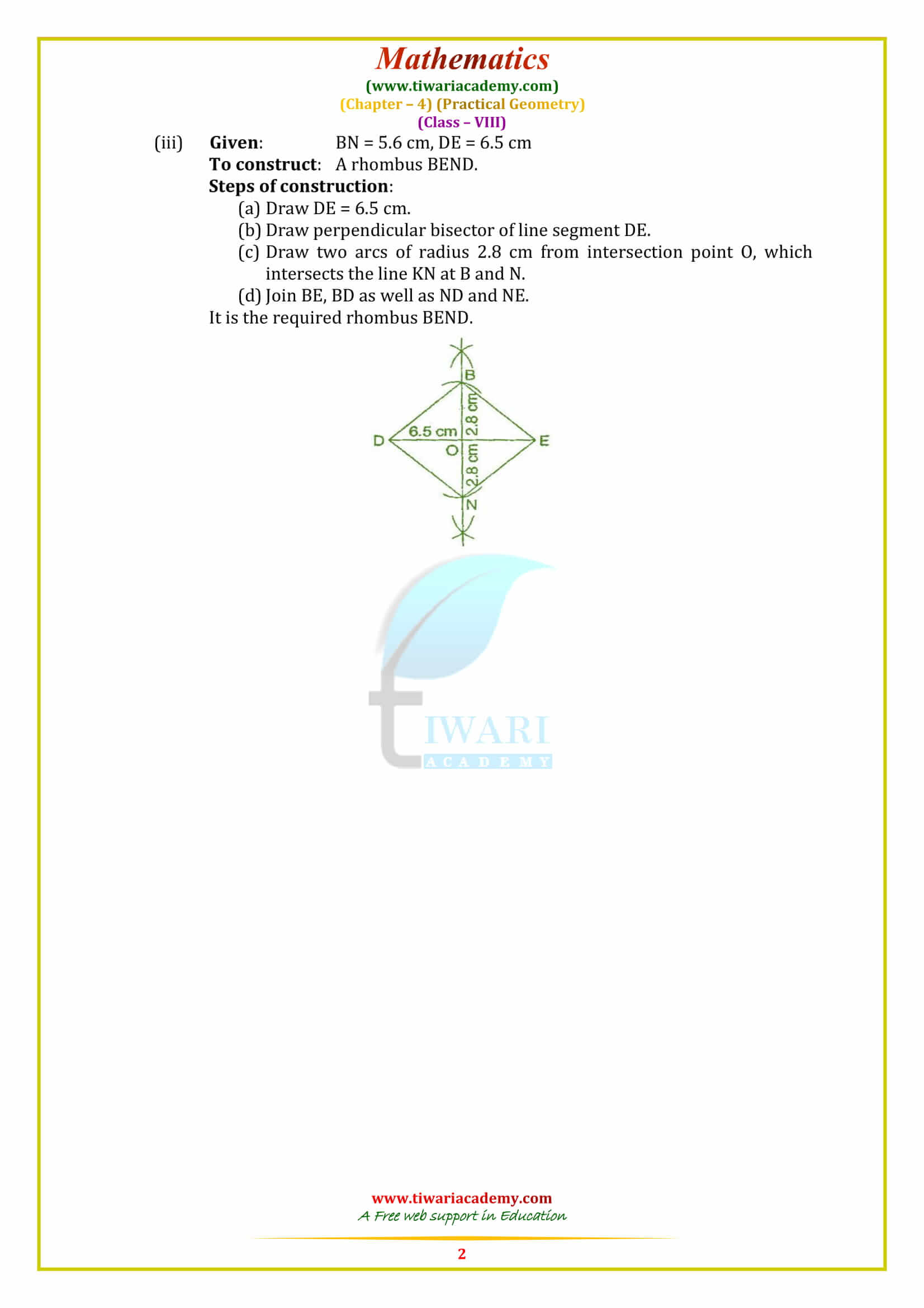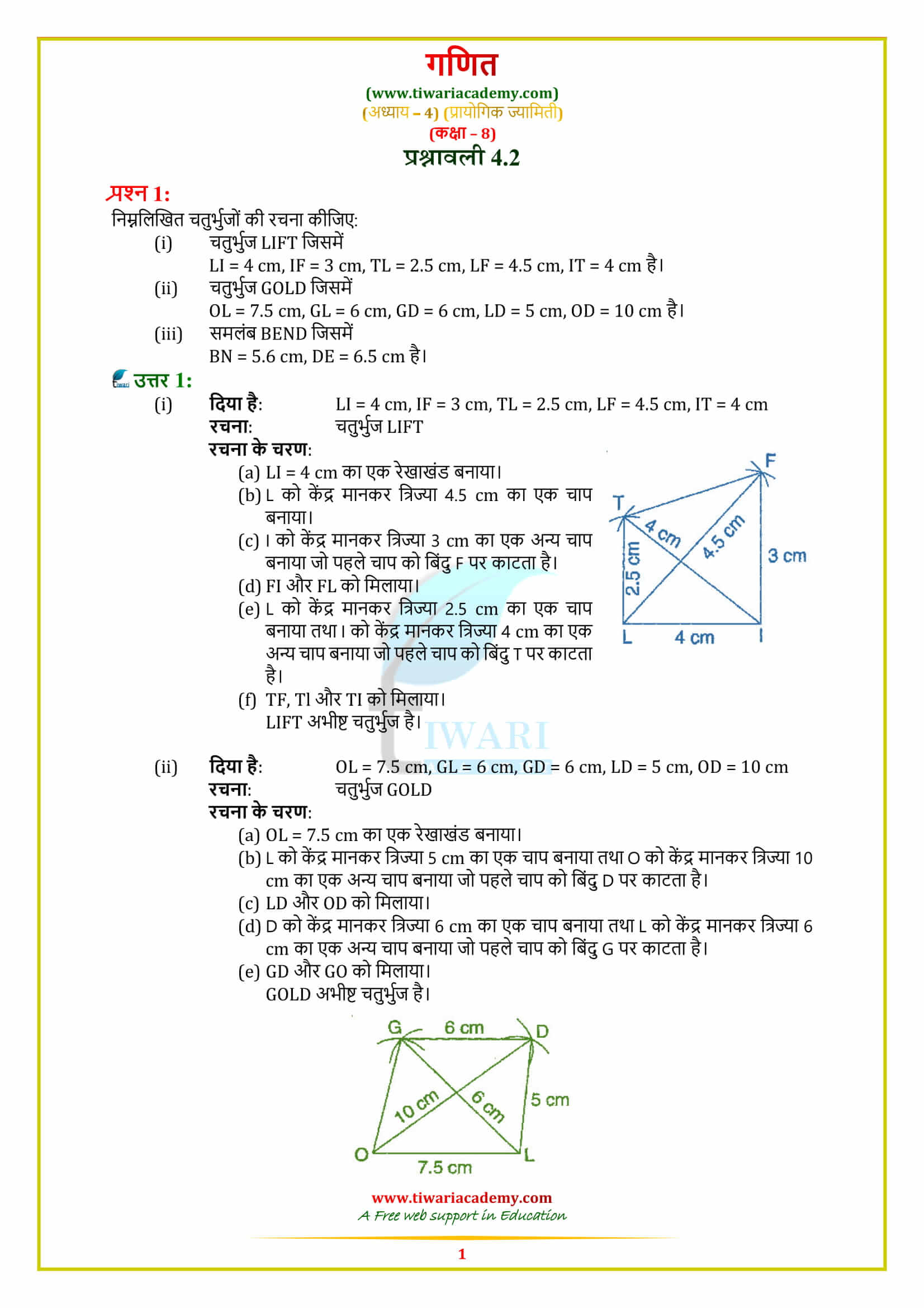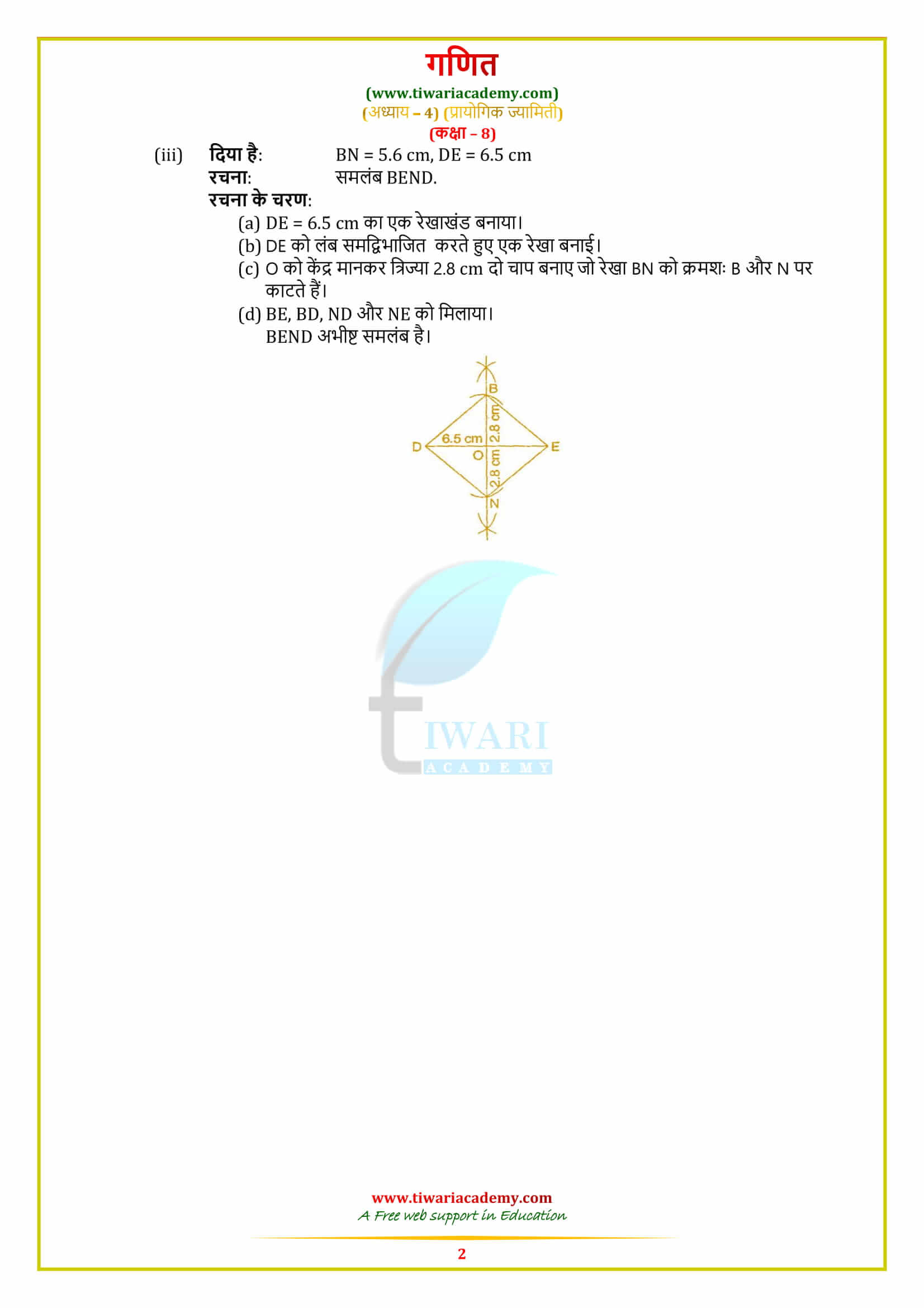NCERT Solutions for Class 8 Maths Chapter 4 Exercise 4.2 Practical Geometry in Hindi and English Medium updated for CBSE and State board. Find updated, concise NCERT solutions for Class 8 Maths Chapter 4, Exercise 4.2 on Practical Geometry at Tiwari Academy, available for free in both Hindi and English. Ideal for CBSE and state board students seeking clear, accessible guidance.
8th Maths Exercise 4.2 Solution in Hindi and English Medium
Class 8 Maths Chapter 4 Exercise 4.2 Solution
Class VIII Mathematics NCERT textbook Ex. 4.2 of Practical Geometry in English Medium and Hindi Medium updated for CBSE academic session 2025-26. Videos related to 8th Maths ex. 4.2 are also given along with the PDF solutions. All the questions are explained well in simple steps using proper formula. If someone feel problem to access the contents, please contact us for help. Contents on Tiwari Academy are free to use without any formality.
| Class: 8 | Mathematics |
| Chapter: 4 | Exercise: 4.2 |
| Topic: | Practical Geometry |
| Medium: | Hindi and English Medium |
| Content: | NCERT Exercise Solutions |
Class 8 Maths Exercise 4.2 Extra Questions for Practice
Construct a quadrilateral ABCD in which AB = 3.4 cm, CD = 3 cm, DA = 5.7 cm, AC = 8 cm and BD = 4 cm.
First we draw a rough sketch of quadrilateral ABCD and write down its dimensions as given.
We may divide it into two triangles, namely triangle ABD and triangle ADC.
Steps of construction:
Step 1. Draw AB = 3.4 cm
Step 2. With B as centre and radius equal to 4 cm, draw an arc.
Step 3. With A as centre and radius equal to 5.7 cm, draw another arc, evious arc at D.
Step 4. Join BD and AD.
Step 5. With A as centre and radius equal to 8 cm, draw an arc,
Step 6. With D as centre and radius equal to 3 cm, draw another arc, cutting the previous arc at C.
Step 7. Join AC, CD and BC
Then, ABCD is the required quadrilateral.
Is a parallelogram Sometimes a quadrilateral?
A Quadrilateral is only a 4 sided figure & has no specific features, whereas a Parallelogram is a 4 sided figure with opposite sides parallel and equal, opposite angles equal and adjacent angles in a linear pair. A Quadrilateral is not a Parallelogram. A Parallelogram is a Quadrilateral.
Is a quadrilateral a square?
Square is a quadrilateral with four equal sides and angles. It’s also a regular quadrilateral as both its sides and angles are equal. Just like a rectangle, a square has four angles of 90° each. It can also be seen as a rectangle whose two adjacent sides are equal.
To Construct a Quadrilateral When 3 Sides and 2 Diagonals are Given:
Construct a quadrilateral ABCD in which AB = 4 cm, BC = 3.8 cm, AD = 3 cm, diagonal AC = 5 cm and diagonal BD = 4.6 cm.
First we draw a rough sketch of quad. ABCD and write down its dimensions as given.
We may divide it into two triangles, namely triangle ABC and triangle ABD.
Steps of construction:
Step 1. Draw AB = 4 cm
Step 2. With A as centre and radius equal to 5 cm, draw an arc.
Step 3. With B as centre and radius equal to 3.8 cm, draw another arc, cutting the previous arc at C.
Step 4. Join BC.
Step 5. With A as centre and radius equal to 3 cm, draw an arc,
Step 6. With B as centre and radius equal to 4. 6 cm, draw another arc, cutting the previous arc at D. Step 7. Join AD and CD.
Then, ABCD is the required quadrilateral.
Question:
Construct a quadrilateral ABCD in which AB = 3.6 cm, BC = 3.3 cm, AD = 2.7 cm, diagonal AC = 4.6 cm and diagonal BD = 4 cm.
Solution:
First we draw a rough sketch of quad. ABCD and write down its dimensions as given.
We may divide it into two triangles, namely triangle ABC and triangle ABD.
Steps of construction:
Step 1. Draw AB = 3.6 cm
Step 2. With A as centre and radius equal to 4.6 cm, draw an arc.
Step 3. With B as centre and radius equal to 3.3 cm, draw another arc, cutting the previous arc at C.
Step 4. Join BC.
Step 5. With A as centre and radius equal to 2.7 cm, draw an arc,
Step 6. With B as centre and radius equal to 4 cm, draw another arc, cutting the previous arc at D.
Step 7. Join AD and CD.
Then, ABCD is the required quadrilateral.







